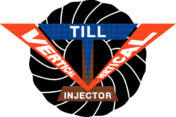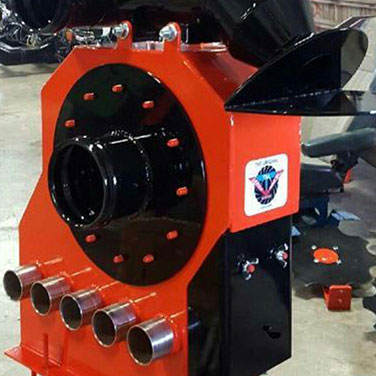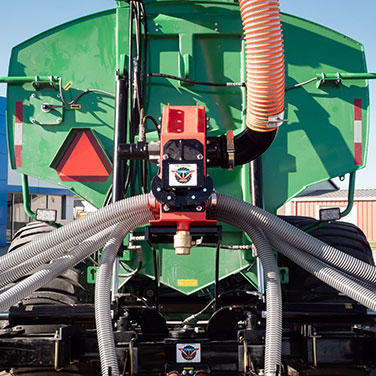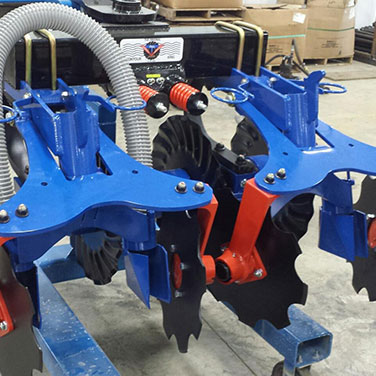Calibrating a Manure Spreader for Sale
You’re looking at a variety of manure spreader for sale and aren’t sure what you need to do to ensure that it runs correctly. Calibrating them using this simple method will tell you how much manure you need to use and give you an idea of the cost value of the machine.
Mark the Tractor Tire
The first step when trying to calibrate any manure spreader for sale that you may own or purchase is to mark the tire with a small piece of rope. This step is relatively simple but vitally important for calibration. Start by tying the line all the way around the tire at any point, as long as the rope is not on the ground. Make sure that you knot the cord appropriately to ensure that you get the best results. A slipknot may be a good choice, here, as are any other knots you might seem from a fisher.
Now, drive the spreader forward until the rope is on the ground. You’ll probably need a spotter for this step because you won’t know for sure when the cable hits if you are driving the tractor. Once the rope hits, make a mark on the ground with a stick. Now, drive forward slowly until the rope hits the ground again. Mark this spot on the earth and then use a tape measure to get the distance.
This distance is the movement of one tire revolution. You will use this information when calibrating your spreader to ensure that it works properly. Simply put, you’re going to have to pay special attention to this number later on when you calculate the distance that your manure spreader moves during a typical application time. That step is the next one that you need to take.
Calculating Tire Revolutions
Now, get behind the wheel of your spreader and drive it in a straight line along the field you plan on fertilizing. Any manure spreader for sale should have a simple control mechanism that makes it easier to drive in a straight line. Drive slowly so that your spotter can watch the rope go around on your tire. They will count how often the cable comes to the top of the tire along the length of the fertilization area.
Once you reach the end of the long area of your field, repeat this process along the shorter end. Make sure that your spotter writes down all of the rotations as you drive. If your field is rectangular, you can stop after just two lengths of the area. However, if your field is oddly shaped, you’ll need to go along all of the different ranges in this way to get the best possible measurement.
At this point, you’ve done a majority of the hard work for your calibration. Now, all you need to do is some simple math to ensure that you get the best result. This process requires understanding how to convert your tire rotations into feet, how to calculate the full length of the field, and how to calculate the number of acres a full tank of your manure should cover on your area.
Gauging the Proper Manure Level
Now, you need to multiply all of the tire rotation amounts by your tire revolution size and add them up to get your total field size. This process can be hard to understand without a little help, so let’s walk through a typical field to get an idea of what to expect. For example, let’s say that your tire revolution is about five feet or so and that you went through 50 revolutions along the long side of your field.
Multiply five by 50 to get 250 feet for the full length of your field. Now, if you had 25 rotations for the width of the field, multiply this number by five to get 125 feet. Though this is a relatively small field, you can still use it to calibrate your manure spreader properly. For example, you need to multiply the length and the widths together to get an idea of the full size of your field.
If you multiply 125 by 250, you get 31,250 feet. This amount is a rough estimate of your total field size, which should be accurate enough for the purposes of calibration. Once you have calculated this amount, you need to divide it by 43,560, which is the total amount of feet in a single acre. The amount we calculated (31,250) divided by 43,560 is 0.717 or nearly three-quarters of an acre.
At this point, you now know how much a single load from your manure spreader will cover on a field. However, you still don’t know how much fertilizer to use yet because you need to calculate the depth of your manure spread in gallons or tons. Thankfully, this step is also relatively simple to perform and will give you a very accurate understanding.
Finding Out the Gallons of Manure Used
The amount of manure that you want to spread will vary depending on your needs. For example, you may need only a few inches of manure across your field or even up to a foot. Typically, the best way to calculate this amount is to figure out how much fertilizer your manure spreader for sale can spread and then dividing the amount by the area covered, in acres, to get the amount you need for each acre.
For example, let’s say that you have a spreader that applies six tons of manure as it rides. You can divide this amount by your acreage to get how much your spreader will spray per acre. Let’s go back to the figure above, or 0.717 acres. Divide the six-ton amount calculated earlier by this amount to get 8.38. This number means that you’ll need to spread 8.38 tons of manure per acre with your machine.
Get Help Today
If you live in the United States or Canada and need help calibrating your manure spreader for sale, please contact us at Vertical Till Injector (VTI) to learn more about this process.



